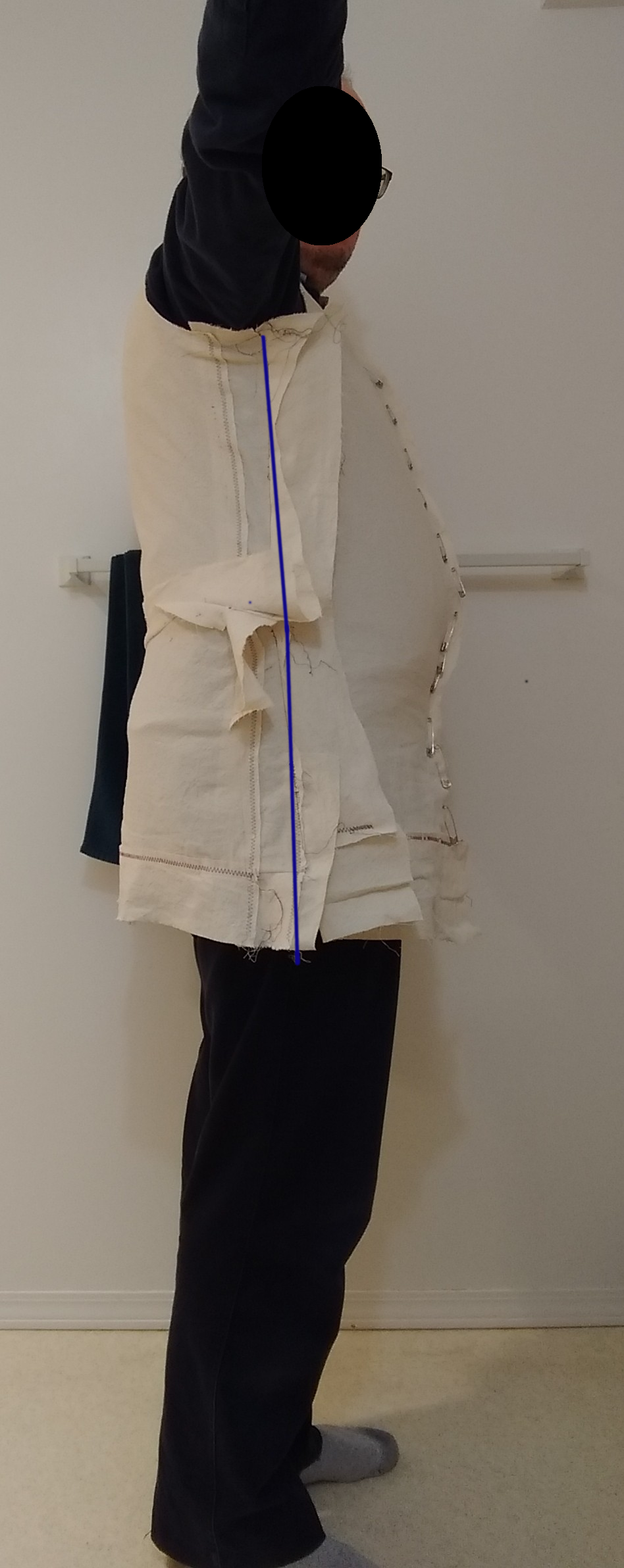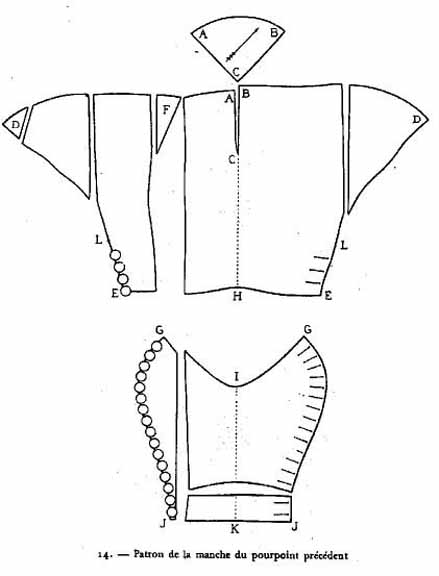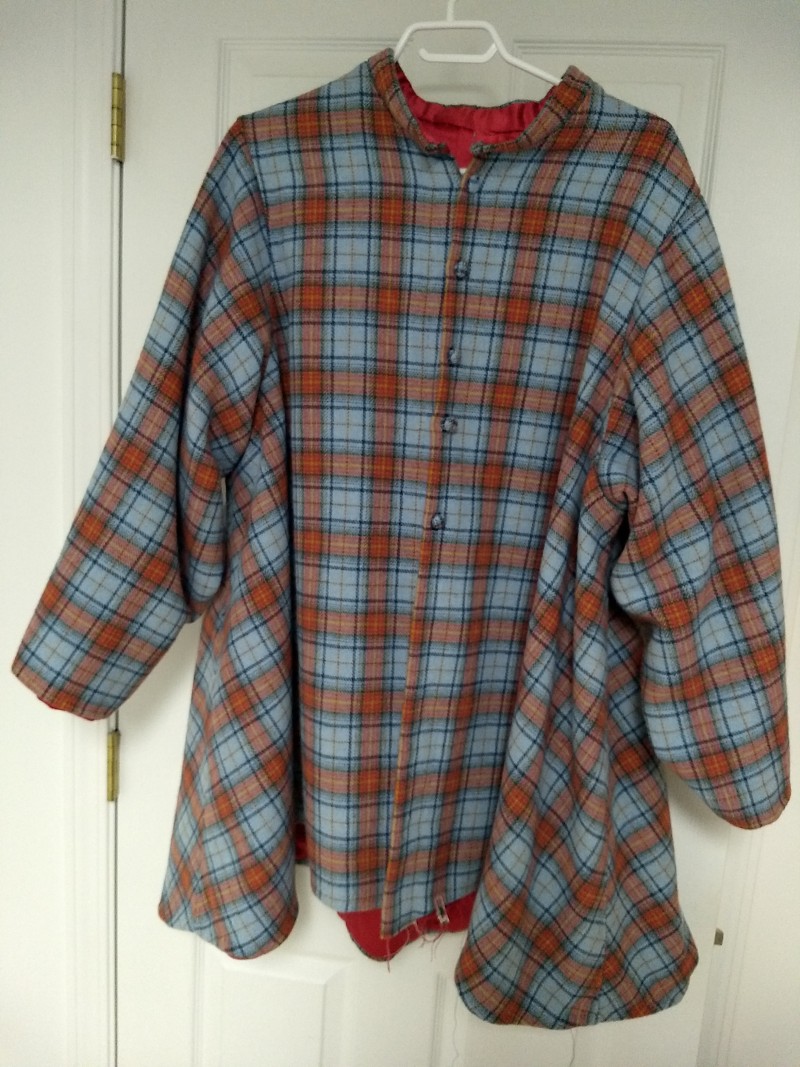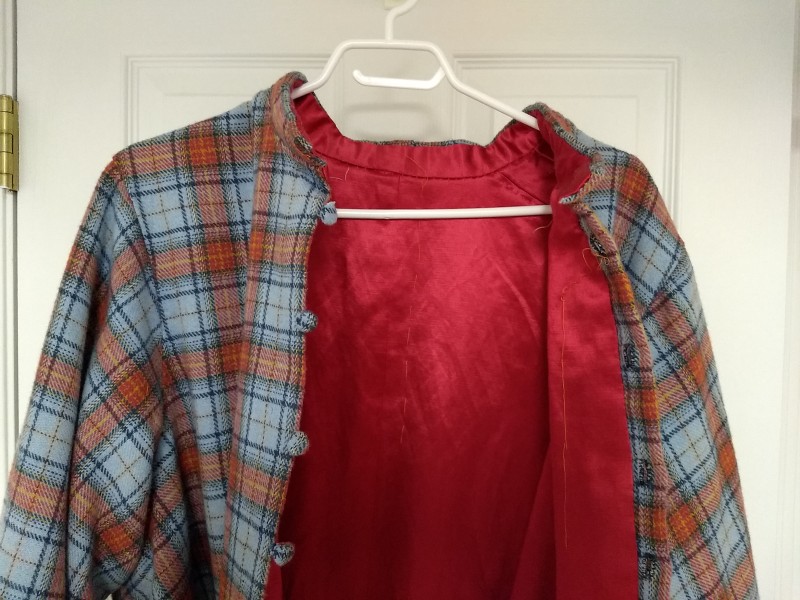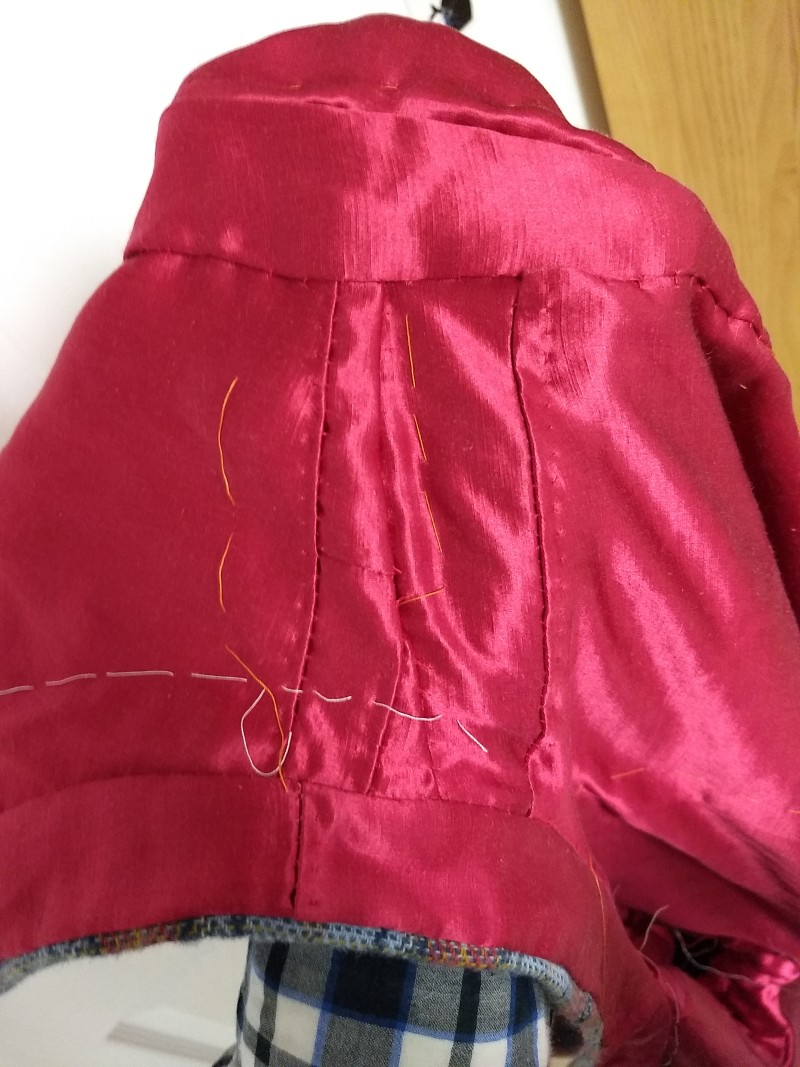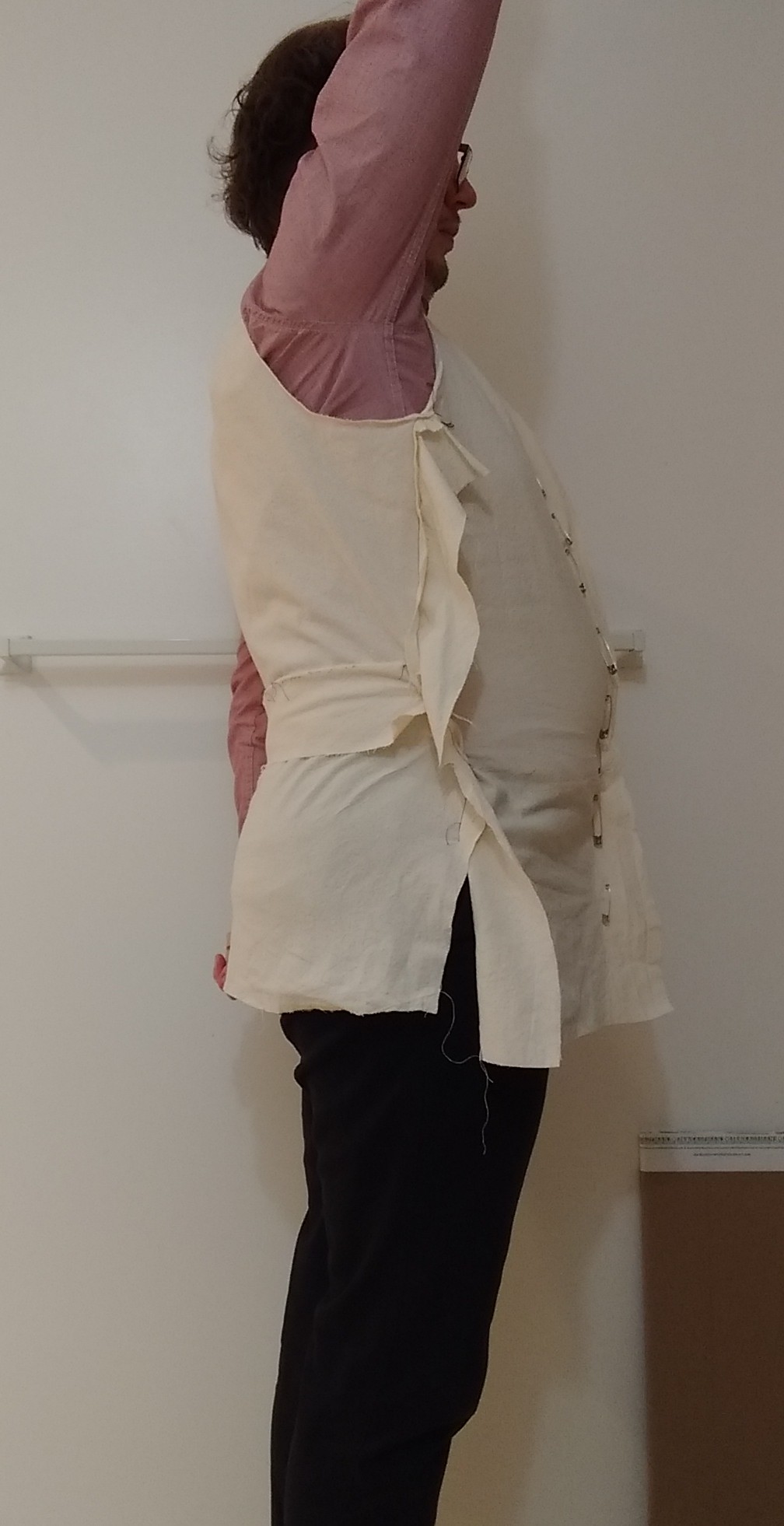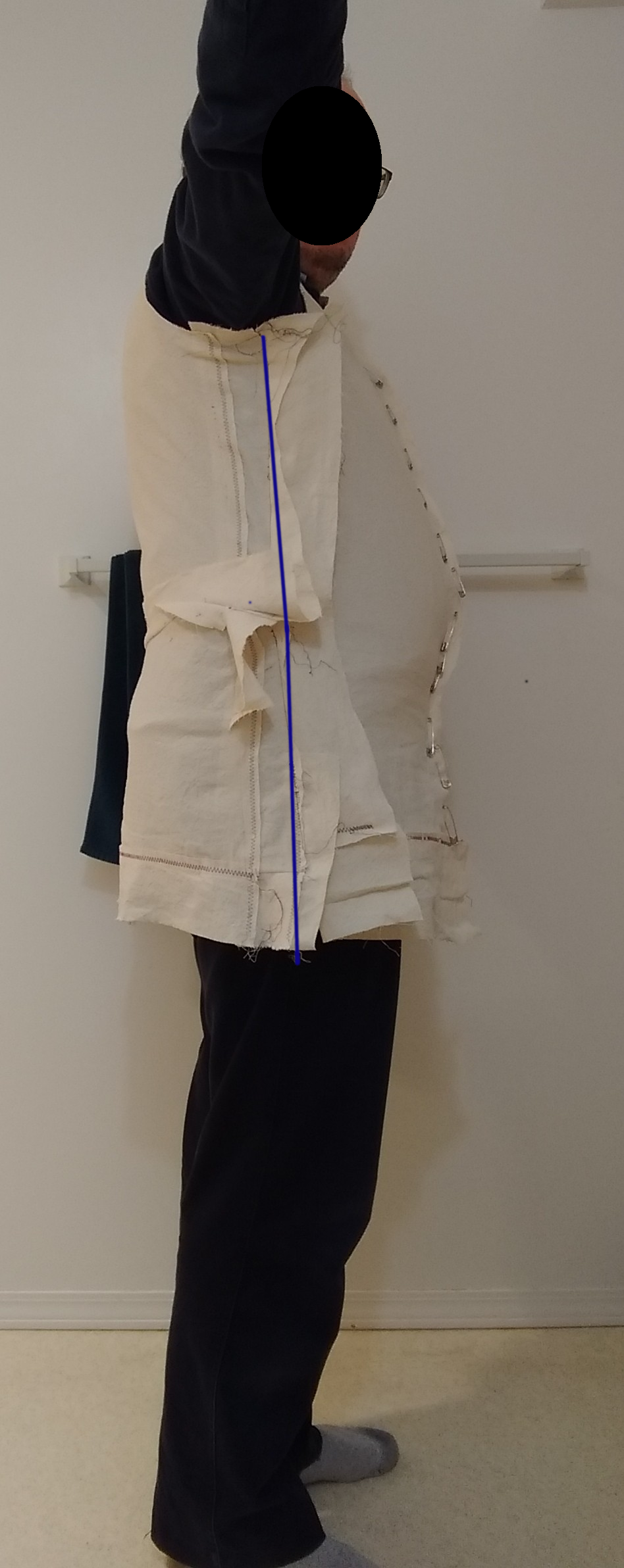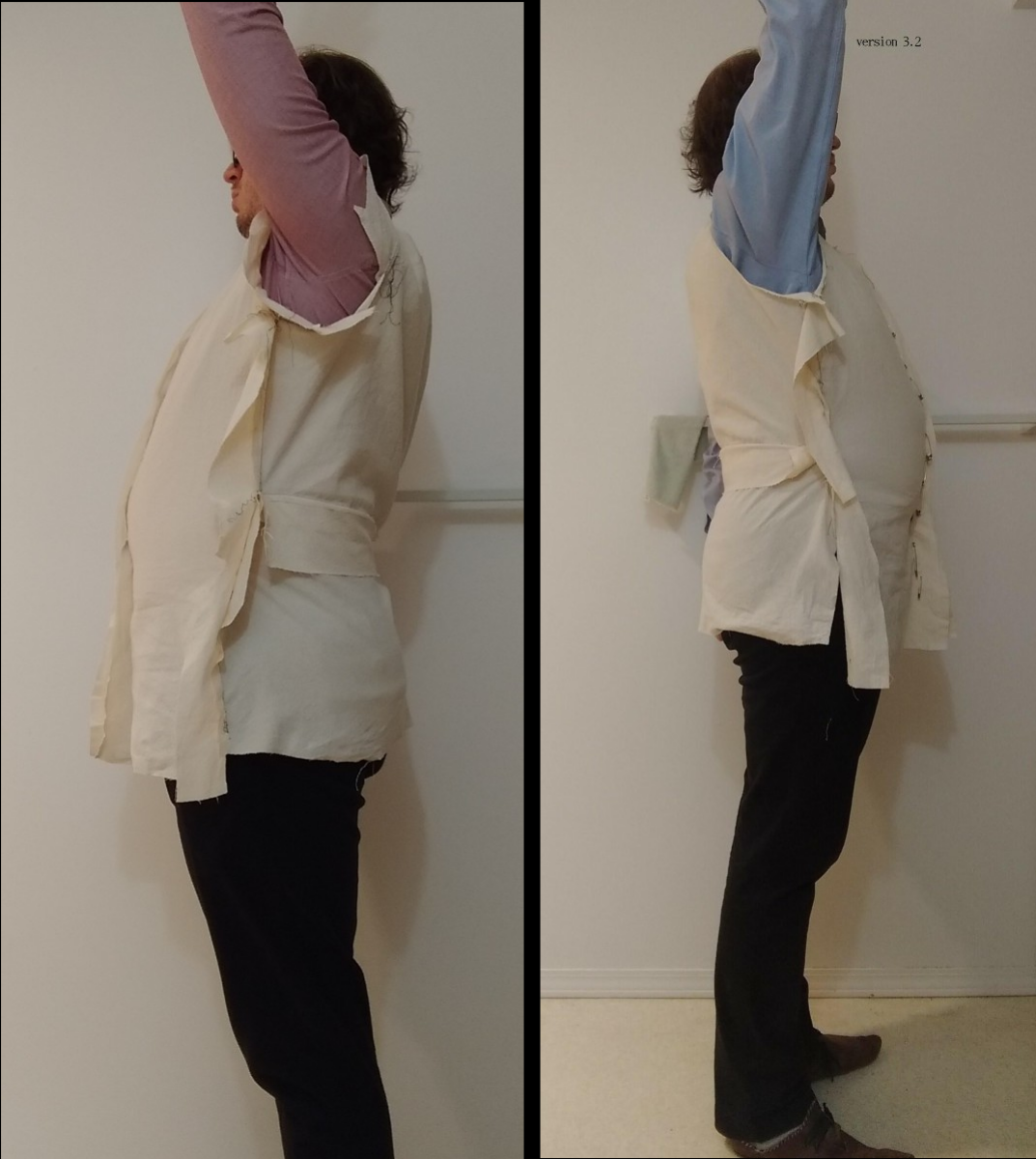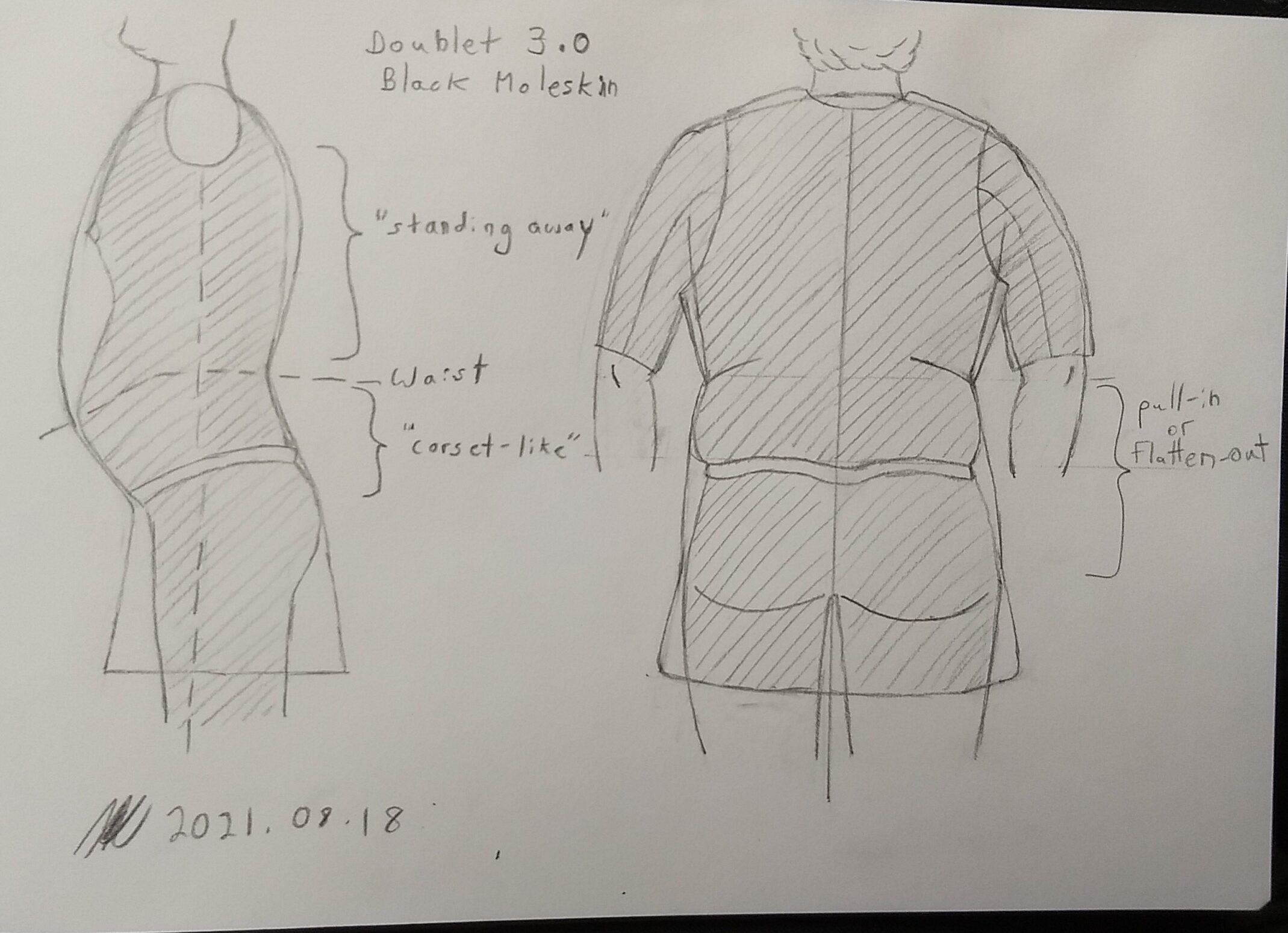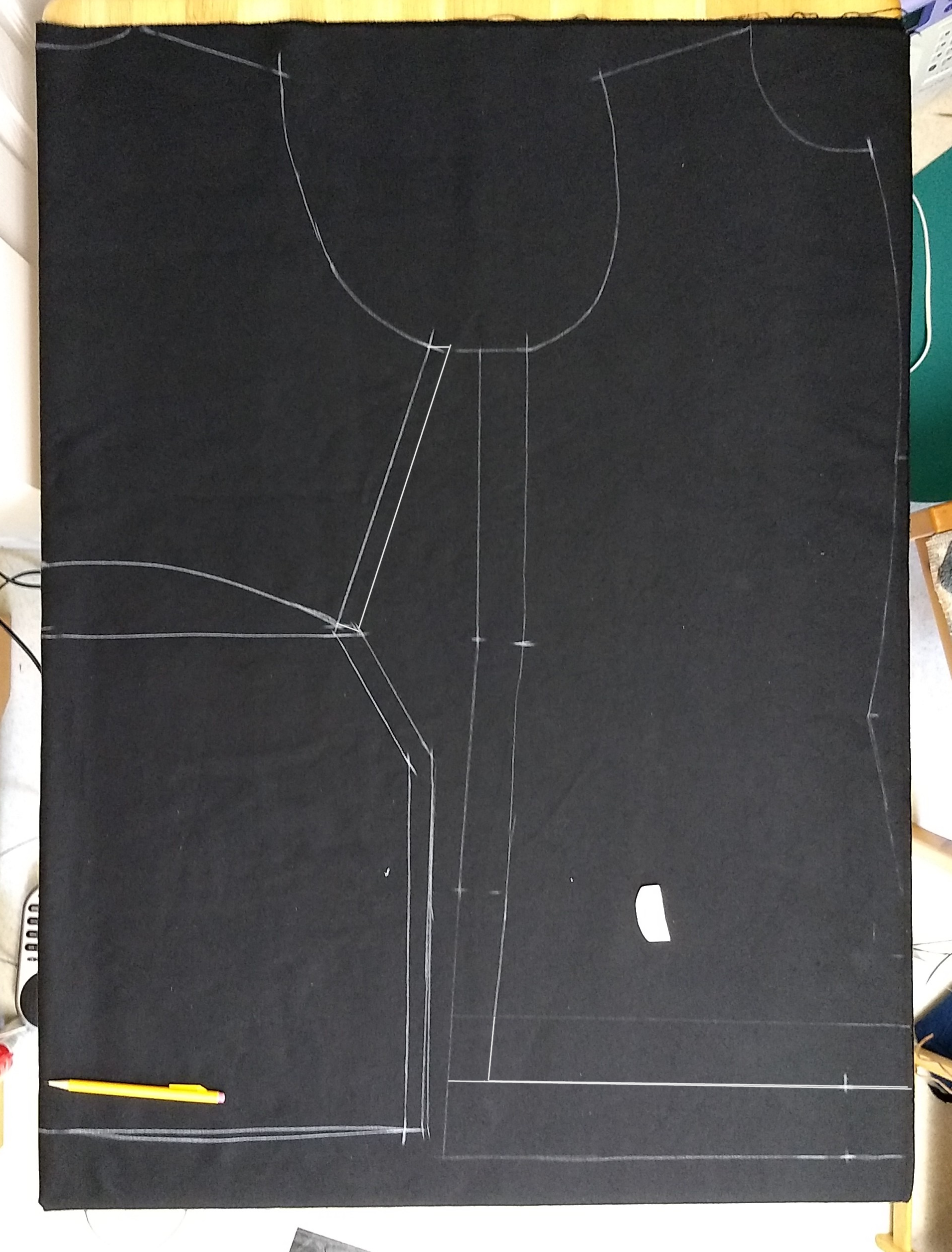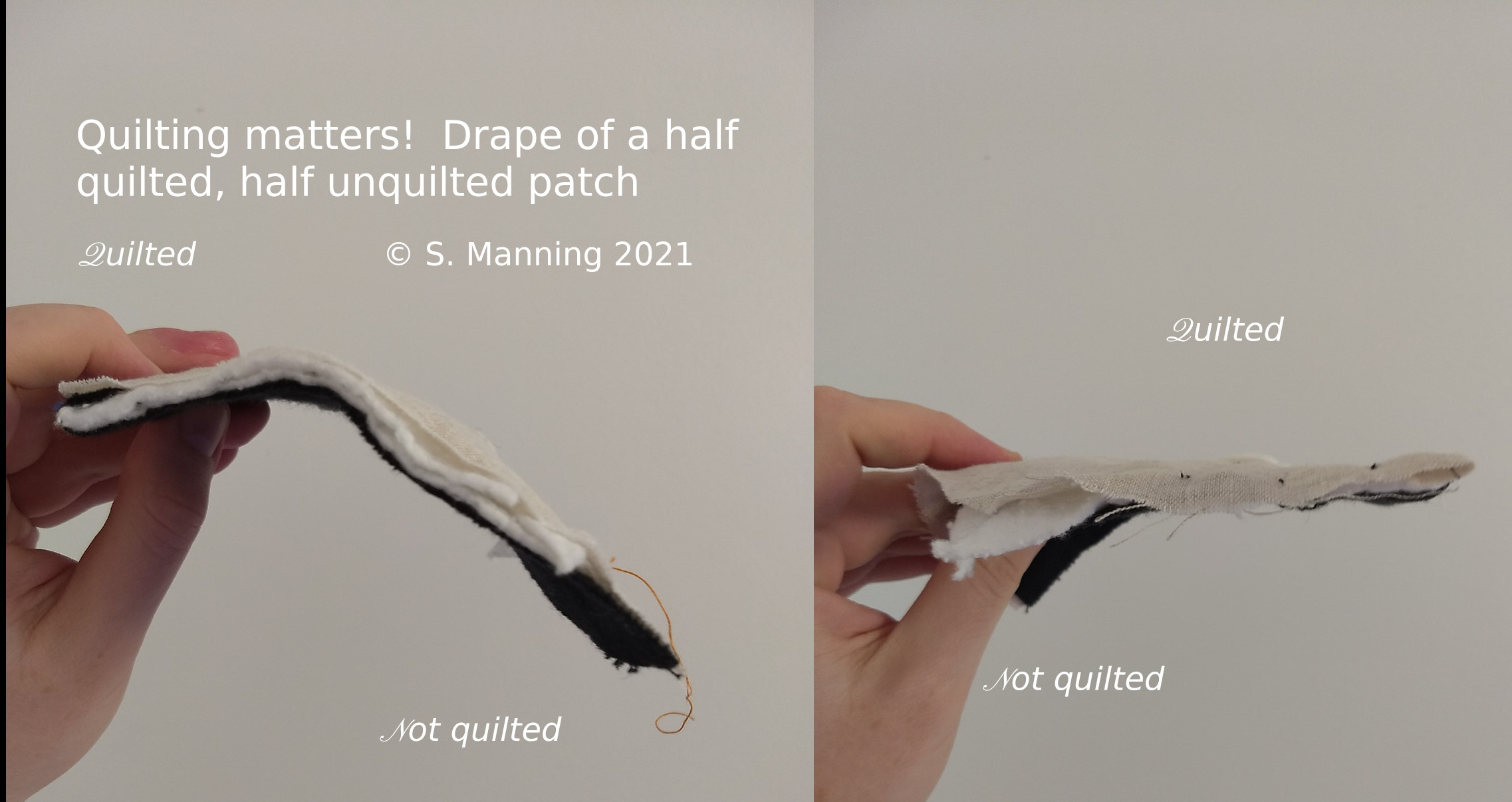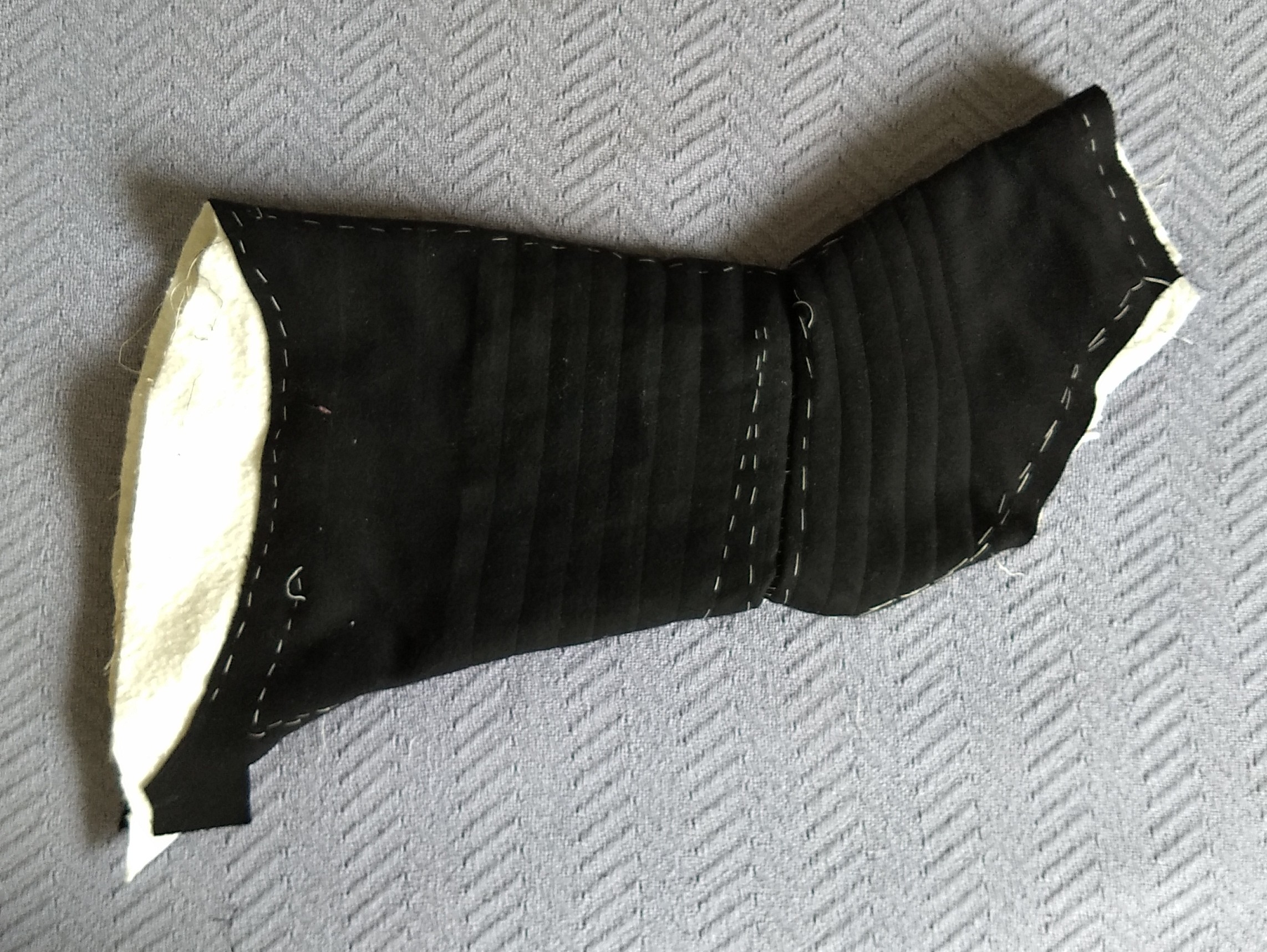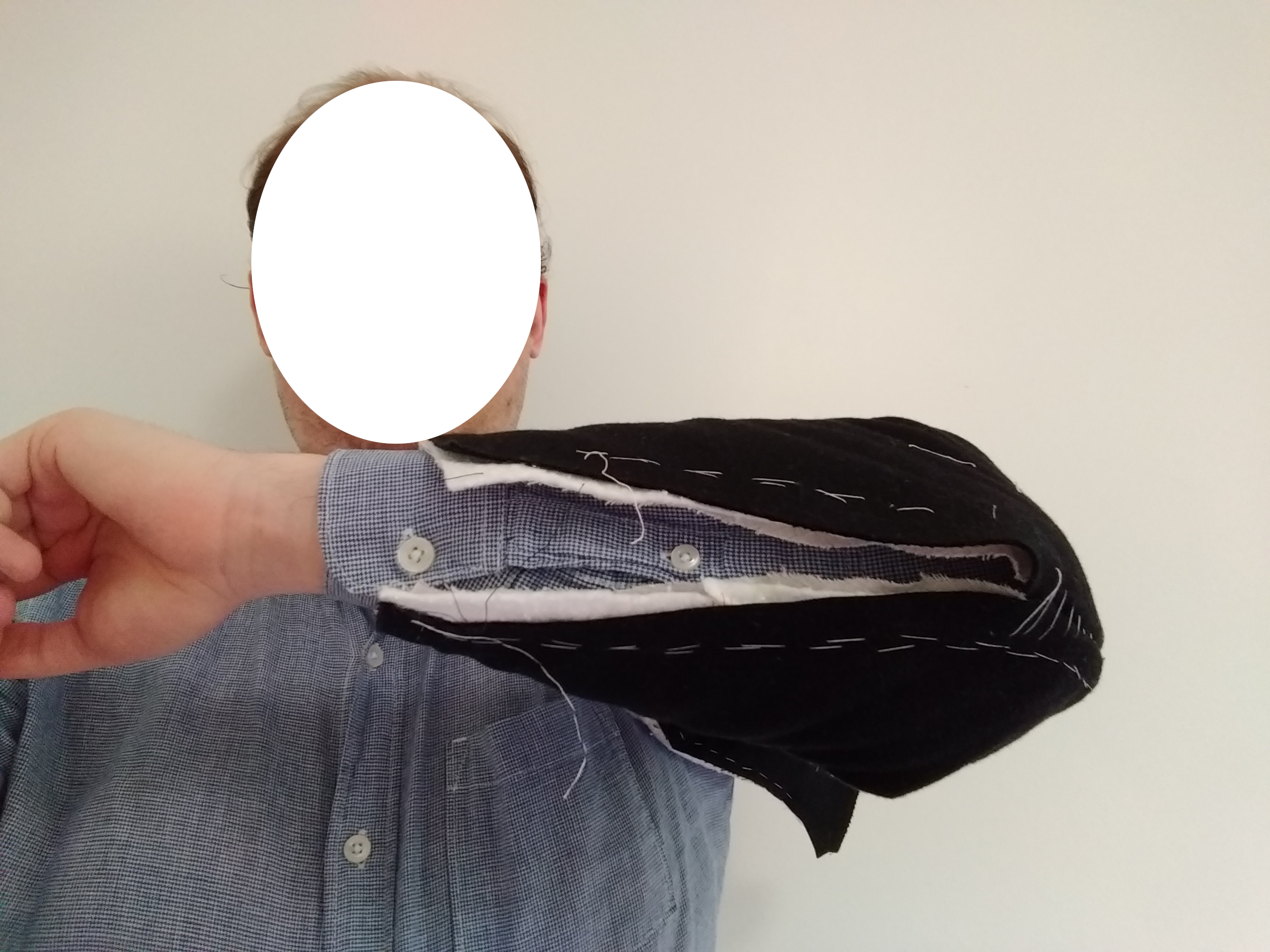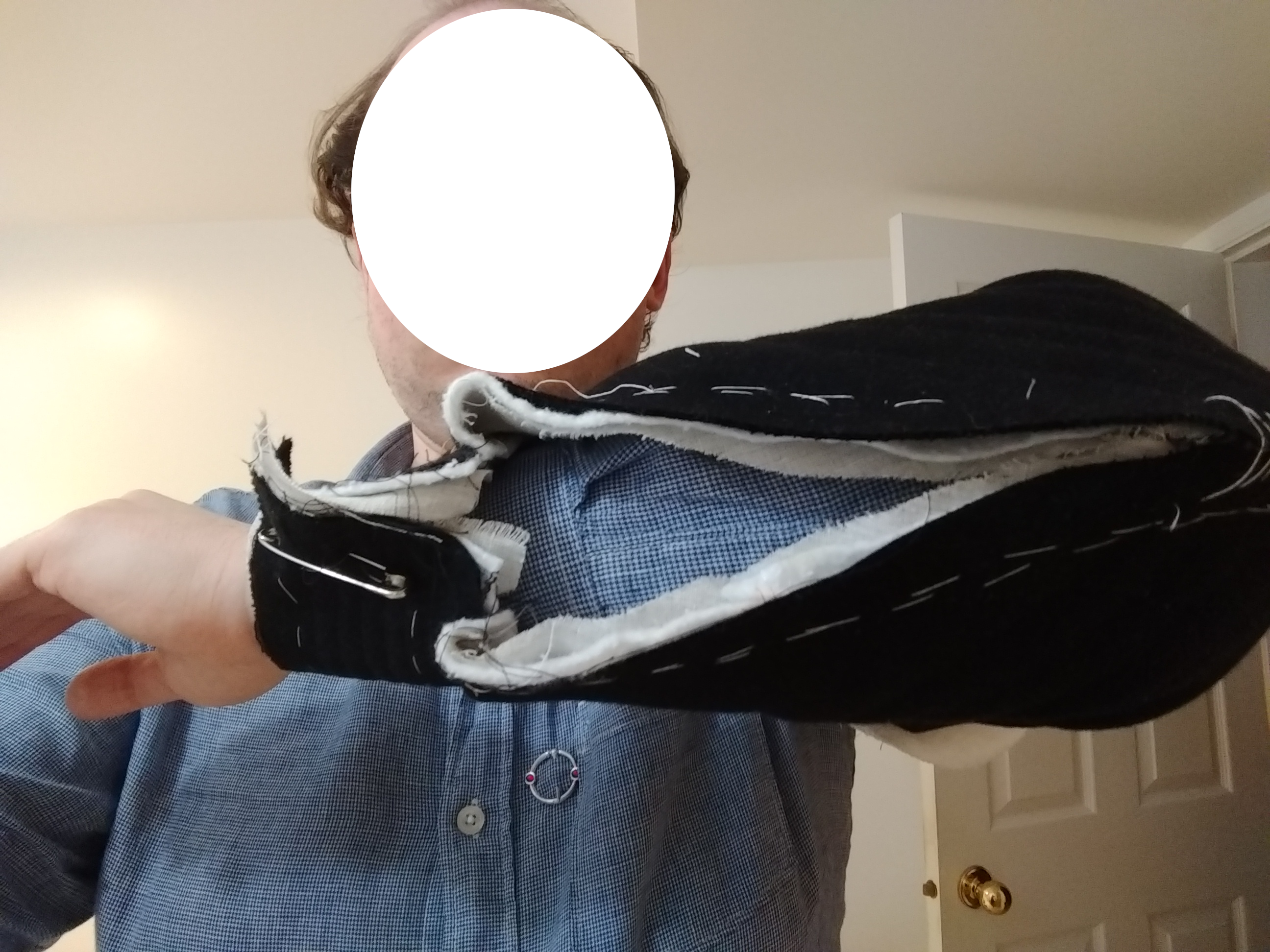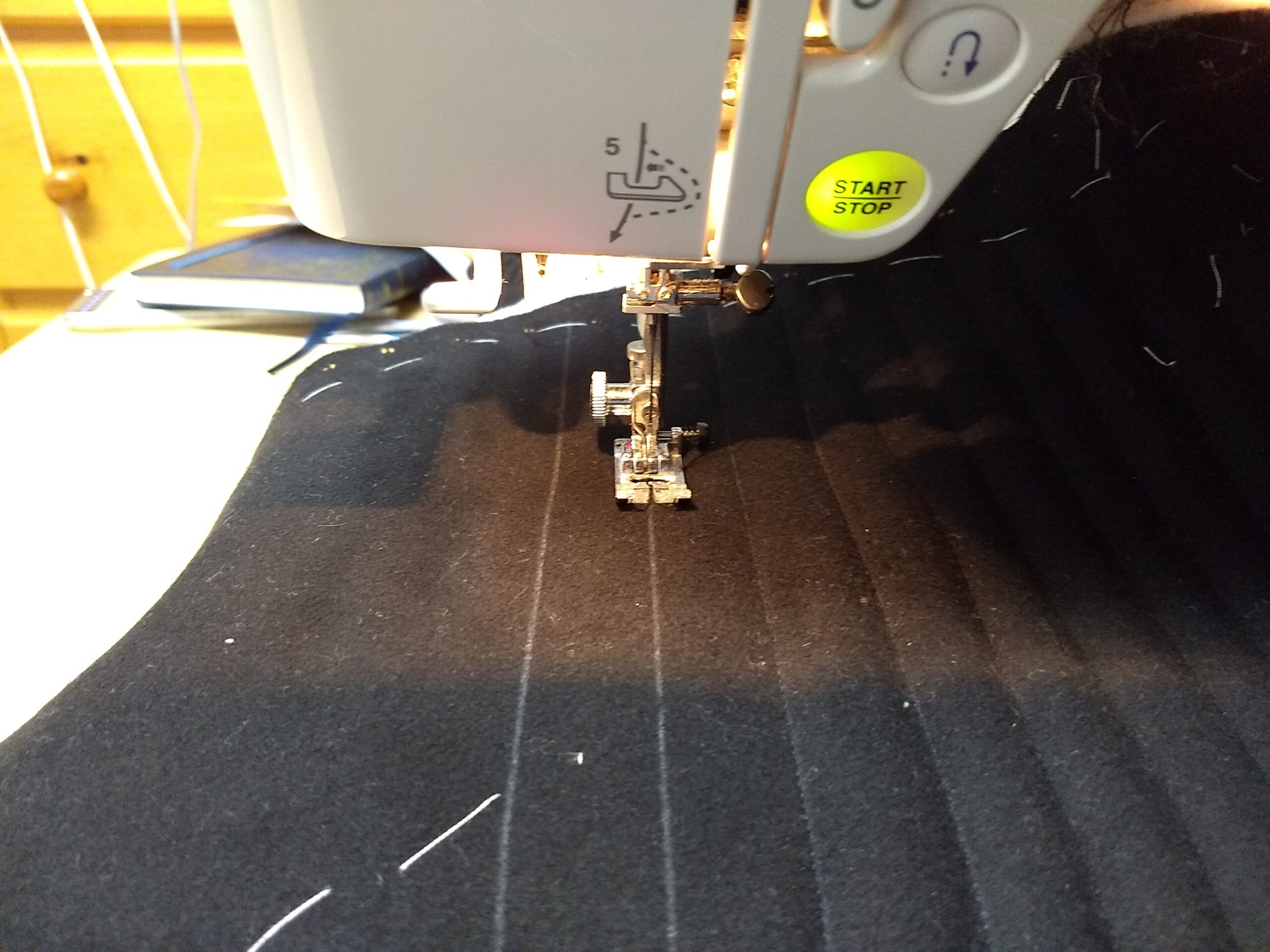BSB Cgm 6 Legenda Sanctorum Aurea and BNF Latin 511 Speculum Humanae Salvationis are both from Alsace and show some of these less ideal forms. The St. Barbara Altarpiece in Helsinki is an early picture of a big guy in a doublet-shaped garment.
After talking this over with Mac, it seems like the most important thing is to make sure it has a waist so the skirt can do its corset thing and the top half can do its ballooning out thing.
Decisions: - long enough in the skirt to keep me decent
- small armholes (a grande assiette would be too much for my drafting skills)
- sleeves with an upper arm, a lower arm, and a cuff like the pourpoint of Charles de Blois
- black moleskin facing, linen lining, possibly one extra layer of linen
- pattern drafted with chest, height, waist, and hip tapes divided into 48 fingers (Matthew Gnagy's interpretation of the 16th/17th century Spanish system)
- not sure how much will be quilted. I have a lot of 80% cotton / 20% polyester batting handy, my standby of Warm and Natural would be hard to get due to the current situation. Looking at art, the skirts are almost always quilted around the body, and the lower sleeves are usually quilted around the forearm
- probably some machine stitching
- buttoned front and probably sleeves, but not a crazy number of buttonholes
- ideally, loose enough to shrug off my shoulders and wear dangling from the skirt like we see in 15th century art.
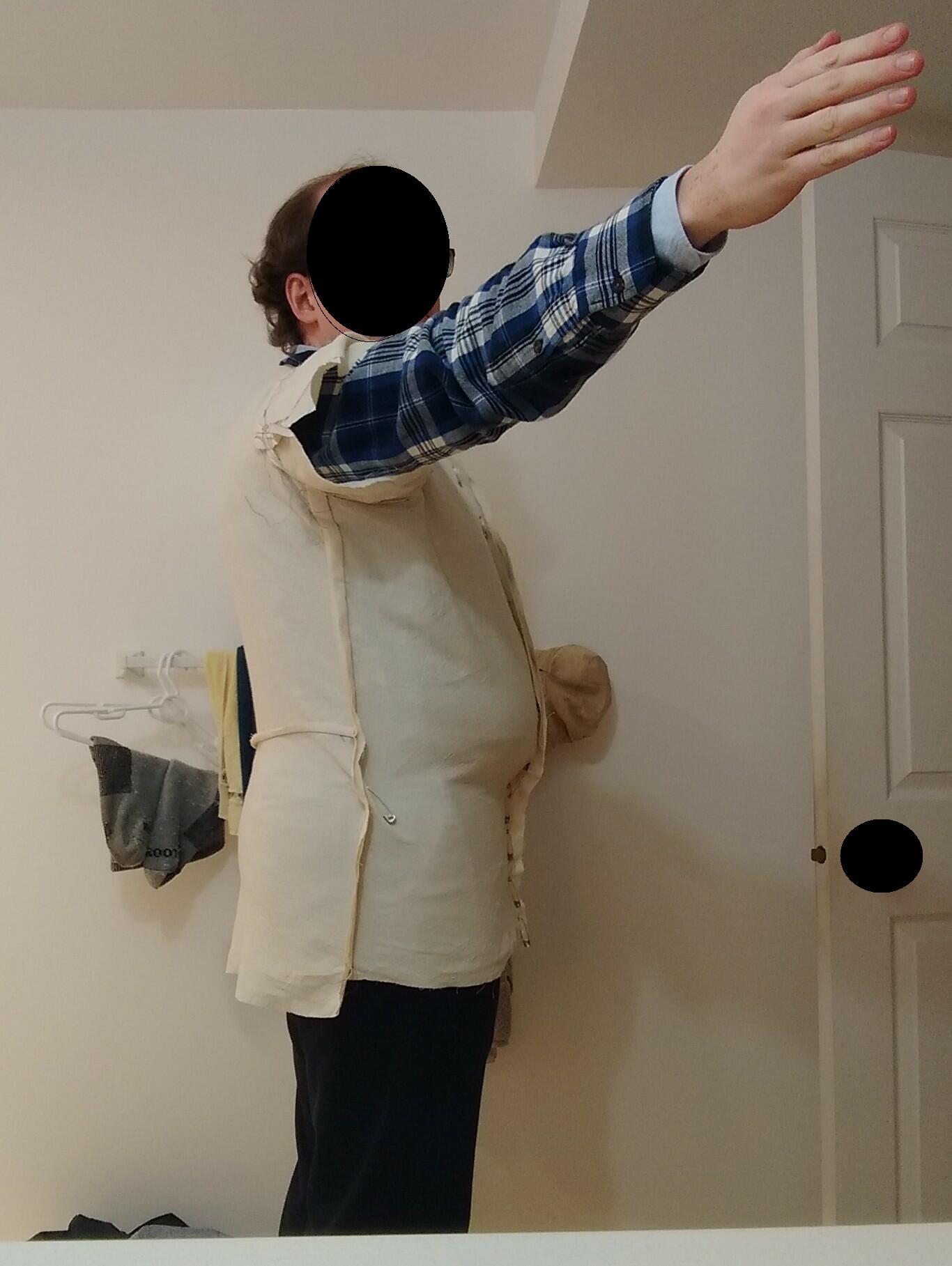
My second mockup on the first fitting. This has a lower back waist than we usually see in art, I could have tried 1 or 2 fingers higher. The next steps are to lengthen the skirt in front, get the skirt as tight around the hips as possible, and remove those stress lines in the chest.
Edit: you can see the thread on my second doublet (the white linen one) here). I don't remember if I have a thread on the first doublet, the blue half-linen one.



